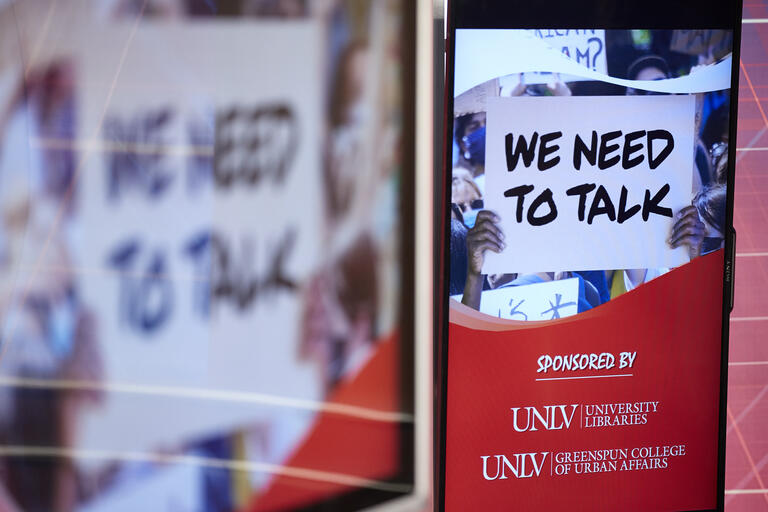“There are no problems,” Peruvian native, tour guide, and entrepreneur Aleks Leiva tells us on our bus ride to Puno, Peru. “Only solutions. That is what my father has taught me.”
We are now at an estimated 13,000 feet above sea level in the highlands of Peru. After days of multiple bus trips — as well as the tough acclimation to high altitude sickness — Cohort 8 has successfully visited four cities and villages across the Andean countryside. And through each Peruvian village, we notice a distinct similarity: Hard-working families who are collaborating innovatively for the benefit of their businesses, livelihoods, and communities as a whole.
Caroline Farah, a Global Entrepreneurship Experience cohort member and UNLV student double majoring in Secondary Education and English, explains more on her personal experience in Peru’s local villages, and how Peruvian families are impacting the Andean community:
Peruvian Way of Life
On the fourth day of our trip, we crossed the snow-capped Misiti volcanoes, traversed the Colca Canyon, then made our way to our final destination — the village of Chivay, located in Peru’s Colca Valley. Visiting this village was eye-opening, as we got to explore the village’s rich culture and witness the locals' entrepreneurial spirit.
Chivay is well known for its green agricultural terraces that trace back to the Incas. Going west of Chivay, we watched as condors — birds that represent freedom — circled above the Cruz del Condor viewpoint. In the afternoon, we enjoyed the La Calera hot springs, which includes natural pools made of thermal water. Right outside of our hotel, we experienced the entrepreneurial spirit of Chivay as we interacted with numerous private, local vendors who were showcasing their products to customers on the street. Chivay is a small town where cars or other forms of transportation outside of llamas or one's own feet are rare, and it's difficult for the vendors to transport their products across long distances to and from the city every day. But through perseverance, the hard-working vendors of Chivay are successful at overcoming those barriers to provide many authentic, handmade products, agricultural goods, and souvenirs for tourists. And it doesn't end there. These entrepreneurs work daily to connect personally with customers, cater to each clients’ different needs, and improve their own communication skills along the way. Our tour guide, Aleks, informed us of how several of the Peruvian villages' economies depend entirely on tourism dollars.
As we continued our adventure to Lake Titicaca, the highest navigable lake in the world, we got to experience the responsibilities these communities faced when it came to tourism. We visited Lake Titicaca's Uros Island, which is rich in Andean culture. The Uros live on floating islands that islanders have artificially constructed out of the totora reeds. They depend on one another and on tourists to keep their economy stable. While poor themselves, the Uros find ingenious ways to use their unique skills to attract tourists. For example, men are mainly responsible for providing food through fishing while women stay on the island to cook and focus on the community's largest source of income — handmaking souvenirs and other products to sell to tourists. The islanders were astute at communicating with customers and persuading them to buy goods despite the language barrier. These business-savvy entrepreneurs deftly boosted sales by taking time to talk with us, explain what their products are, and show us their rooms and homes. Marya, an 18-year-old Uro, took me on a tour around the floating island and showed me the humble, yet colorful room she shares with her sister. She is attending the university located in Puno to become a ‘profesora,’ or teacher, and her dream is to instruct local children. She described how much the locals value education, especially for girls. When not studying, Marya assists with the family business by making authentic pillow cases and other souvenirs.

We continued our journey to Taquile Island, which is located on the Peruvian side of Lake Titicaca by the city of Puno. Taquile Island is very small; only 2,200 people live there. Again, I was amazed to see how innovative the locals were and how they worked together to enhance their economic conditions by selling products to tourists. The island is well-known for its fine handwoven textile and clothing — which are mainly handcrafted by men, not women. The women weave and men knit from an early age. Their economy is highly dependent on tourism-generated income, fishing, and agriculture. They are especially big on growing corn, quinoa, and potatoes. The Quechua-speaking Taquilenos also run a rustic restaurant, where we were served with traditional Peruvian dishes.

Visiting the village of Chivay, the Uros in Lake Titicaca, and Taquile Island was a lesson in the intersection of culture and entrepreneurship. I admired the locals' tenacity and drive to identify opportunities to build new businesses. As our tour guide, Aleks, always says, “look for solutions, not problems,” and the people we've encountered in Peru are perfect examples of this.
More to Come
As we continue on our journey throughout Peru, we find not only different cultures, but different work ethics that revolve around family and innovative change. Stay tuned for more as GEE continues to discover Peru.
The Lee Business School’s Global Entrepreneurship Experience Program, or GEE for short, is a four-year curriculum that teaches students of any discipline the necessary skills in creating and scaling a business.


